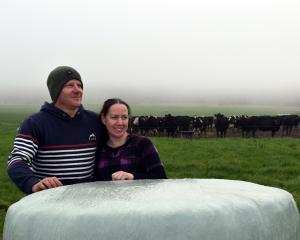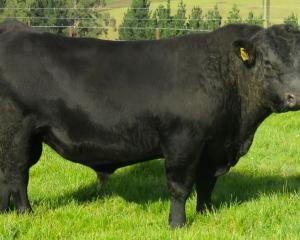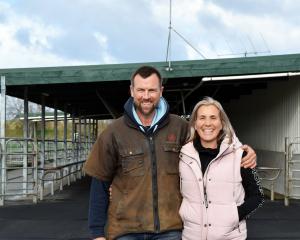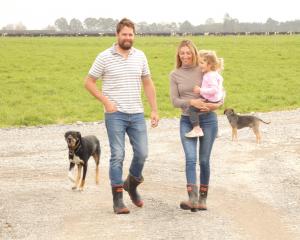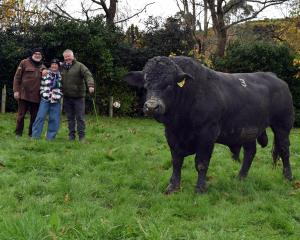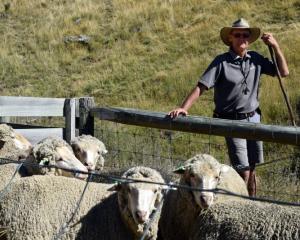
Stock enjoyed the change in diet and growing sunflowers and other species also went some way to addressing the problem of muddy paddocks in winter, he said.
Megan and Grant Scott own the 398ha Reay Farm at Tuturau, in Southland, which they bought from Megan’s parents, Finlay and Barbara MacKay, about 13 years ago.
In addition to swedes and traditional pasture mixes, which include ryegrass and clover, they have been trialling the sunflower blends.
‘‘I attended a field day with Stan Winter about regenerative farming and I thought I would give it a go,’’ he said.
Mr Scott started experimenting with 24ha of sunflowers as well as kale, ryecorn and fava beans, Daikon radishes, oats, rape, Italian ryegrass, swedes and turnips in the same blend two years ago.
Sunflowers were a complete unknown when we first put them in.’’
This year he planted 26ha using a similar mix to last season but removing the swedes and turnips as they struggled to compete for light with the taller plants.
‘‘Sunflowers have quite deep roots and they punch the sub-soil, enhancing and aerating it, and dragging minerals up.
‘‘Last year I did notice we have loads of bumblebees and lots of birds.’’
There are also more worms and fungi in the soil.
He put his hoggets on the new diet ad lib, and they were enthusiastic about it.
They run about 3000 stock units including TEFRom and Perendales as well as Wairere Romneys and composites.
They used to provide dairy support but now focus on their commercial sheep, something they have done for the past two years.
‘‘We terminal everything and have put Wharetoa Meatmakers over them.’’
‘‘They have between 133% to 145% lambing percentages, depending on the year and how deep the snow is’’.
While the new mix did not yield as well as more traditional crops, there were compensations as dead matter and trash were trampled into the soil, which meant far less mud, especially in difficult winter conditions.
It also increased carbon levels in the soil.
The experimental sunflower mix yielded about eight to 12 tonnes of dry matter per hectare compared to about 17 tonnes with swedes and other conventional crops.
He said only about 40% of the feed was utilised, but it was ‘‘worth a crack’’.
‘‘The paddocks are then undersown with young grass and we still see the remains of last year’s stalks.’’
He grows other conventional feed crops as well.
‘‘It is something different and I do a lot of playing around to see how it goes.
They limit their use of chemicals and intend planting more flowering trees as shelter belts to encourage more bees.
The couple intended to continue with the sunflower mix trials.
‘‘They still make me smile when I drive past, even on the ... [worst] day.
‘‘I quite like them,’’ Mr Scott said.


